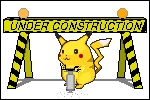diff options
| author | noa | 2024-09-17 10:40:21 +0800 |
|---|---|---|
| committer | noa | 2024-09-17 10:40:21 +0800 |
| commit | 03641604fd78684fe7fdbb685831d7fcd2cf1f17 (patch) | |
| tree | 3d06f29278f9cd1129bd7f02cd5fe7dcc8966f88 /emacs/init.el | |
| parent | 5d640784c5bfa99d9a13b67fdcbbcba214f191ab (diff) | |
Remove discussion on leap keys
Diffstat (limited to 'emacs/init.el')
| -rw-r--r-- | emacs/init.el | 11 |
1 files changed, 0 insertions, 11 deletions
diff --git a/emacs/init.el b/emacs/init.el index 731609b..1230fc4 100644 --- a/emacs/init.el +++ b/emacs/init.el @@ -775,17 +775,6 @@ The misspelled word is taken from OVERLAY. WORD is the corrected word." (global-set-key (kbd "M-o") 'other-window) (global-set-key (kbd "C-x k") 'kill-current-buffer) -;; Jef Raskin's leap -;; As a concept, i really like the canon cat. As described [[https://news.ycombinator.com/item?id=33286408][here]], it has two leap keys to navigate the buffer. [[https://dercuano.github.io/notes/eink-design.html][According to Kragen Javier Sitaker]], you could move side to side with the arrow keys, but not up and down. The idea was that any up and down movement would be better served by incremental search. This is something that i want to explore. - -;; > If you press and release the LEAP key, it advances the cursor one character forward (or backwards if you hit the left leap key.) - -;; > If you press down (but do not release) the LEAP key you enter a search semi-mode. As you type a search term in this semi-mode, the cursor moves to the first instance of that search term it finds. After moving to the first instance of the search term, you release the leap key to exit the search semi-mode. - -;; > If you want to move the cursor to a subsequent instance of the search term, you press (and do not release) the "USE FRONT" key and press the leap key again (whose key front is labeled "Leap Again.") - -;; Semi-modes seem hard to implement in emacs, although in a lot of ways they are already here. I am not a fan of modes in the vi-sense at all, and isearch in emacs is a mode like this. That is, keybindings work differently when isearching, and you have to press C-g or RET to go back to the normal editing flow. - ;; Window management ;; My computer has a small screen, so i find that it's more beneficial for me to split the frame into columns, so i get more context. However, splitting in this way only gives me a (window-width) of 61, so emacs will always split into vertically stacked windows. By setting this to 80, the first split should always be vertical. |
